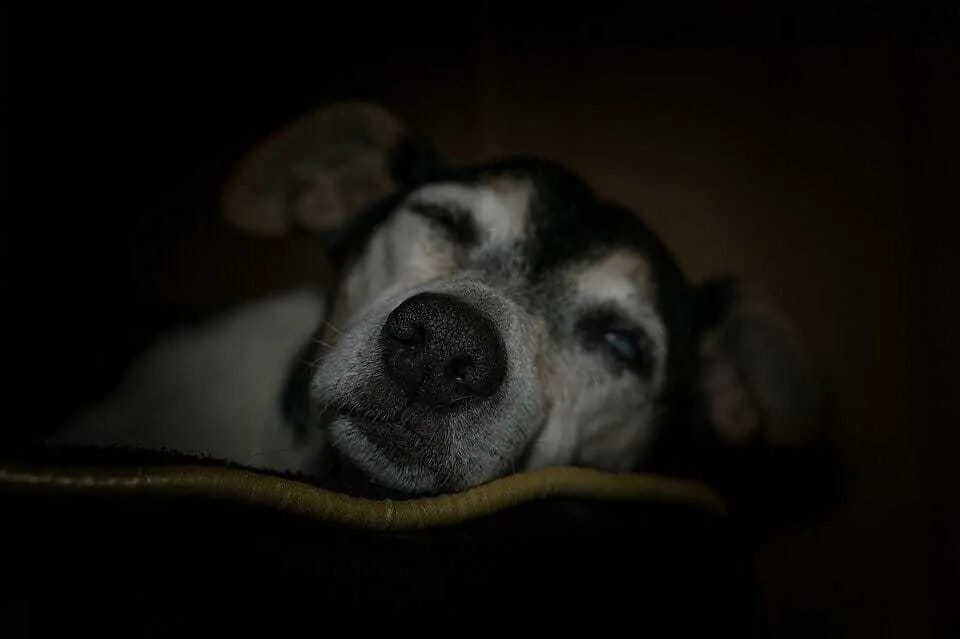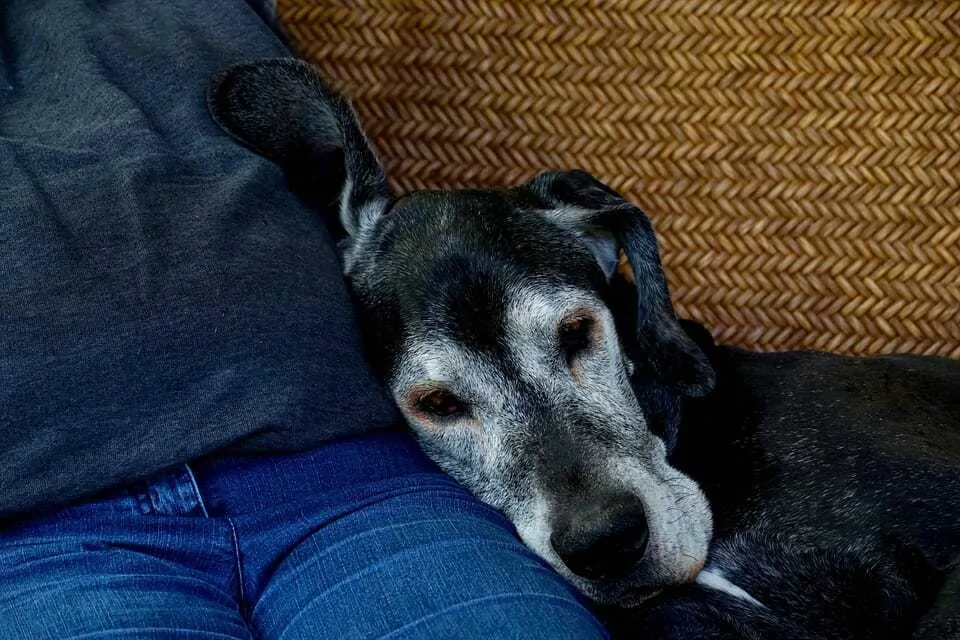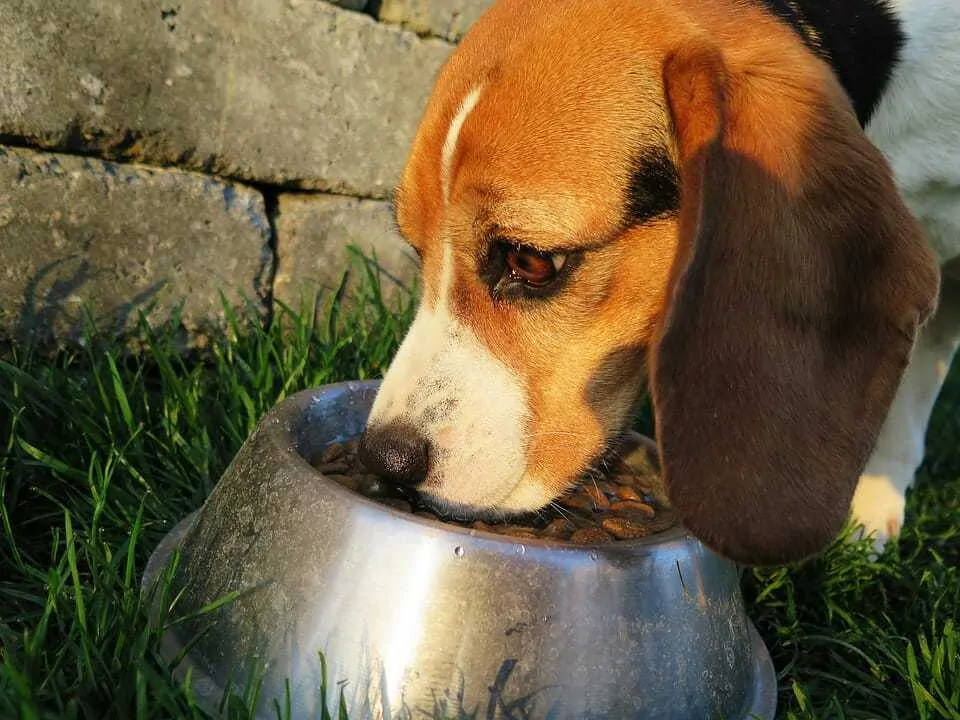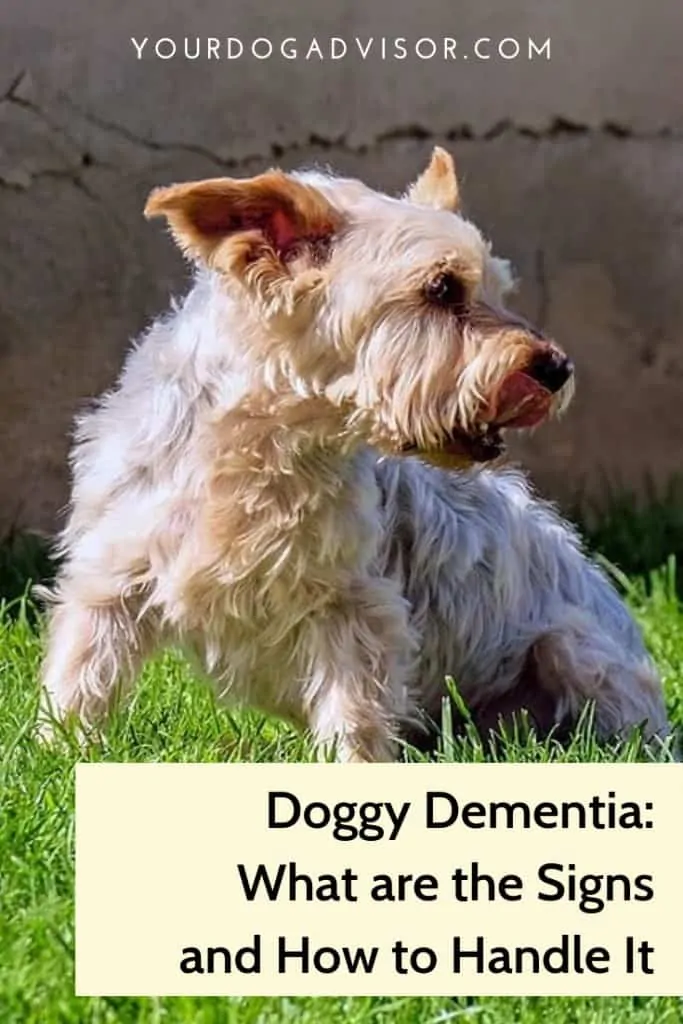As your dog gets older you may start to notice a number of age-related conditions appearing. A lot of these can be managed to ensure that your dog still has a good quality of life. One such condition is doggy dementia. Owners can be truly heartbroken if their dog gets this diagnosis but, with the right treatment and support, many dogs can go on to have a good quality of life for some time to come even whilst living with the condition.
Like humans, the dog population is aging and this means that canine dementia is a more common occurrence
Contents
What is Doggy Dementia?
The official name for doggy dementia is Canine Cognitive Dysfunction (CCD), it is also sometimes referred to as Canine Dysfunction Syndrome. It is similar to the degenerative condition of Alzheimer’s in humans. As your dog ages their brain changes, this can sometimes manifest itself in a decline in mental capacity.
What are the Symptoms of Canine Dementia?
While CCD is a relatively common condition in senior dogs, the severity of the symptoms can vary greatly on an individual basis. The symptoms can be very subtle when they first start to manifest and then become more noticeable, more frequent and more varied as the disease progresses. The progression of the disease varies greatly too and some dogs can live a good life with a CCD diagnosis for a number of years.
Some of the more common symptoms of doggy dementia are listed below.
Disorientation and Confusion
Dogs with CCD may exhibit unusual behaviour like standing staring into space for prolonged periods. They may go into a corner or by a door and just stand there, with their head very close to the wall or door, seemingly unable to move for a lengthy period. Often they will stand at the hinged side of the door, even though previously they have always known which way the door will open. They may sometimes seem like they are lost or confused, even when they are in their own home. They may pace obsessively or spin in circles, without any obvious purpose.
It can be very distressing to witness your dog stand in the corner, seemingly zoned out, but if your dog is not showing any other signs of anxiety then they are usually not in any discomfort.
Changes in Sleep Patterns
Another common symptom of CCD is a marked change in your dog’s sleep pattern. Often referred to as ‘Sundowner Syndrome’, dogs can become much more wakeful during the night. They can become restless, confused, bark or stare throughout the night and this is often accompanied by sleeping more during the day.
You may find that your dog becomes more restless through the night
Changes in Activity Levels
Your dog may be much less active. Whilst older dogs will often require less exercise generally, it can be much more pronounced with CCD sufferers. They may be less inclined to engage with their environment too. Sometimes they actually become more animated too but it tends to be an activity that involves very repetitive behaviours such as lots of pacing, circling and sometimes barking for no apparent reason.
Altered Relationships with People and Animals
This can be one of the symptoms that owners find the most difficult to deal with. Your dog may start to show signs that they do not recognise you, other family members, known visitors or other pets within the household. Sometimes this will just happen occasionally or with only certain individuals or more broadly.
They may start to be fearful, just not wanting to engage as actively, be more withdrawn, not show any recognition or, occasionally, they can begin to react aggressively.
So a dog that once loved to come for cuddles on your lap may no longer enjoy being petted or a dog that has lived with another dog for a number of years may suddenly start to show signs of aggression towards them.
Other times, you may have a dog that suddenly develops separation anxiety and does not want to leave their owners side. They find being on their own incredibly distressing and want company and comfort all the time.
As with all the symptoms, this will vary greatly on a case by case basis.
Some dogs may withdraw from human contact and others may become more clingy than normal
Changes in Toileting Habits
Some elderly dogs can develop bladder problems that relate to an underlying medical condition, it is always important to rule this out in discussion with your vet.
For dogs with CCD if they start soiling in the house it is usually more to do with confusion and forgetfulness. You may need to look at using training pads or doggy diapers if it is a persistent problem.
Your dog may lose some of their toilet training, forgetting to ask to go outside or even forgetting where it is appropriate for them to go
Memory Problems
Your dog may start to forget simple commands that they have known all their life. They may forget how to get from spot A to spot B in the house or garden. Memory problems can also cause anxiety with regards to people, pets and places that they are usually familiar with. They may stop responding to their name or no longer react the same way to well-known routines. It can also be difficult for dogs with CCD to retain new learnings or behaviours.
Of course, if they are no longer responding to commands, it is important to rule out the possibility that they are suffering from age-related hearing loss first.
Mood Changes
Like with human Alzheimer’s, with CCD your dog’s personality can change. They may become more withdrawn, more grumpy (towards people and/or other animals), more clingy (separation anxiety can occur when it was not a problem before), more anxious (they may exhibit fear in situations they didn’t before), or they could start to appear depressed.
Some dogs with dementia can start demonstrating changes in personality. They may show aggression or signs of depression
Changes in Appetite
Some dogs with CCD may lose their appetite because they are feeling depressed, others may just forget to eat. Some can actually forget that they have had a meal and be constantly asking for more.
How is Canine Dementia Diagnosed?
There is not one conclusive test that can tell you that your dog is suffering from canine dementia, but rather your vet will usually make a diagnosis through understanding the different symptoms that you describe they are exhibiting and from a general exam. Because some of the symptoms can be subtle or confused with something else it is believed that CCD is underdiagnosed. If you see particular strange behaviours, it may be worth videoing them so that you can show them to your vet too.
Because it can be a stressful and confusing time for you too, it is always worth writing down whenever you see an unusual behaviour from your dog. Take note of how often it is happening, when and where. This can help to give you and your vet a much clearer picture and will save you forgetting to tell them anything at the consultation.
If the combination of behaviours cannot be attributed to any other condition then it is likely that a CCD diagnosis will be given. It is important not to self-diagnose for your dog. While you may be seeing multiple symptoms that are included in this list, sometimes they could be related to something else and need different treatment. For example, soiling in the house could relate to a urinary tract problem or lack of response when being called could be hearing related. Even the pacing and standing in corners can sometimes relate to other conditions, including vision-related problems.
CCD can also be diagnosed through the use of an MRI but it is rare for this to happen. It is an expensive procedure and not all surgeries have the equipment. The diagnosis via MRI would not change the suggested treatment anyway.
How Can Canine Dementia be Treated?
Like with Alzheimer’s, unfortunately, there is no cure for CCD. There are a number of treatments that can be considered though and while they do vary from case to case, they can have good success in improving your dog’s quality of life.
Drugs Available from Your Vet
Selegiline Hydrochloride is the main prescribed drug for dogs diagnosed with Canine Dementia in the US. It is sometimes also called Selgian or Anipryl.
As well as being used for treating canine cognitive dysfunction it is also used as a drug for human Alzheimer’s and for Cushing’s Disease. It has been shown to extend dopamine activity in the brain. Dopamine is meant to promote memory retention, amongst other things.
Results vary greatly with this drug. Some owners report dramatic improvements in their dog’s symptoms within a few weeks of taking this drug. Others don’t notice any major changes at all. It is a daily drug and it does not have many serious side effects so often people are keen to give it a try.
There is also a drug that is due to be launched on the wider market in 2019 called Ropesalazine that has early positive results. You may want to speak with your vet to get further information on availability and possibilities.
If your dog is suffering from anxiety or finding it difficult to sleep as a result of their CCD your vet may also discuss the possibility of prescribing some other drugs that could help combat these symptoms too.
Changes in Diet
There are a few prescription diets that are marketed as supporting the prevention of some effects of canine dementia. These foods usually contain a high amount of antioxidants and omega-3 fatty acids as it is believed that they may help with memory and learning.
There are some that believe that a specially designed home cook diet can also be beneficial. If you plan to go down this route it is important to seek expert advice. It could be worth consulting with a qualified canine nutritionist.
Some claim that a diet that is high in fish oil (DHA) may help with the prevention of developing Canine Dementia if fed regularly from an early age, although again there is not a lot of scientific evidence to back this up at the moment.
There are prescription diets that are designed to help slow down the development of canine dementia
Supplements and Alternative Treatments
It is important that you discuss any other natural alternatives or supplements with your vet. You do not want to give anything that could potentially be harmful or may not mix well with any prescription medications that they are getting.
Melatonin
Melatonin is a hormone which helps to regulate the sleep-wake cycle. For dogs that are becoming more restless at night as part of their canine dementia, it could be worth trying this supplement. Some owners report that giving this has helped their dog to have a more restful nights sleep.
No products found.
Senilife and Aktivait
Senilife and Aktivait are two supplements that have shown good results in studies. They contain a variety of antioxidants including phosphatidylserine which has also been successfully used in human Alzheimer treatments too.
No products found.
Neutricks
Neutricks contains a protein called Apoaequorin, believe it or not, it is derived from Jellyfish! There have been studies in dogs that show that it can help with learning and attention and has had some positive results in doggy dementia patients.
Acupuncture
Some people use acupuncture for their dog’s with dementia. It can help promote relaxation and reduce anxiety levels and it can also help promote a more restful nights sleep. Obviously, this is only appropriate if your dog is relaxed enough to cope with the procedure. Finding a gentle, patient, flexible and qualified Acupuncturist could be the key.
CBD Oil
CBD Oil is commonly being recommended as beneficial for use on dogs with dementia. It is important to be aware that there are no wide-scale studies yet to support its use with dogs and so it may be more appropriate to wait until there is more scientific evidence given the potential risks.
There have been some smaller scale studies that have shown positive initial findings for treatment of seizures, joint pain and arthritis but they are only preliminary and there is nothing to show efficacy for dementia in dogs. There are issues regarding quality control, appropriate dosage amounts and the fact that is is a psychoactive drug so it can impact individuals in radically different ways.
What Can You Do Help a Dog with Canine Dementia Feel More Comfortable?
Routines
For many dogs with dementia, maintaining a regular routine can be helpful and very comforting. Especially if one of their major symptoms is disorientation or anxiety. Having a regular feeding time, walk time, walk route, sleeping place, feeding place etc can offer a sense of place and help ease anxieties.
Changes to Walks
You may have to stop letting your dog off-leash as often if they get lost, disorientated or easily spooked. Perhaps having them off-leash only in enclosed, secure spaces.
If they need a routine then you may want to stick with the same walking route to avoid any stress or confusion for them. Just because you are sticking to the same route and not having as much off-leash time does not mean the walk has to be boring for your dog though. You can still give them the opportunity for some freedom using a long line and making sure they have plenty of opportunity to sniff as this can be very enriching and stimulating for them.
See our article on the benefits of sniffing as a form of canine enrichment.
Giving your dog more sniffing opportunities for your dog on walk can be extremely beneficial
Providing Enrichment
Yes, your dog may benefit from more routine and they may not need as much exercise as before but that does not mean that they do not still need to be kept stimulated. In fact, studies have shown that keeping their brain problem solving and working as much as possible can possibly help to slow down the progress of canine dementia.
The trick is to not make activities too challenging. Don’t expect too much from your dog if they are generally not managing as well with complex behaviours. So some of the brain train puzzle toys could be too much for some dogs with more progressed symptoms.
Some of our favourites include the Snuffle Mat (this promotes sniffing behaviour), the Classic Kong Toy, the Tux from West Paw Designs. See our in-depth article on safe interactive toys to try with your dog.
Don’t forget though that every case of doggy dementia is different and for some dogs that need a specific routine the introduction of a new toy may cause them stress and it is best not to force anything.
No products found.
Adaptations Around the House
If your dog is struggling with changes in routine it is best not be reorganising things around the home. Keep rooms free of clutter and if they are struggling with stairs or having accidents in certain areas you may want to consider baby gates to keep them safe and secure. Don’t move their food and water bowl about and be mindful of their stress levels if you have visitors.
If your dog is having unpredictable aggressive outbursts towards their doggy companions this is another occasion when introducing baby gates may be useful so that you can control interactions when they are unsupervised.
If your dog is becoming easily disorientated and their mobility is also impacted you may want to consider using runner mats on slippery floor surfaces to avoid any additional stress.
If your dog is constantly moving into a corner space that they find it difficult to back out off, you may want to consider restricting access.
You may need to monitor your dog’s interactions with other dogs in the household to ensure that they remain comfortable around each other
Toileting Adaptations
If your dog has regressed in terms of their toileting habits as a symptom of canine dementia, it is absolutely crucial that you do not punish them. They are not aware they are doing wrong and punishment is not going to help, it will just serve to break any trust that your dog has in you and confuse them even further. It is better to try to get them outside more regularly or, if things have gone past this point, then you may want to consider puppy pads, doggy diapers and maybe even a waterproof bed.
As mentioned earlier, it is always extremely important to rule out a medical condition causing incontinence issues with the help of your vet before attributing it to dementia.
Managing Interactions With Other Dogs and People
If your dog is becoming less inclined to interact with people or other dogs it is vitally important that you don’t force interactions on them. Let them have space if this is what they want. If they are becoming increasingly grumpy with other dogs in the household you may have to offer them an option to have their own space. Sometimes using baby gates can help and, if your dog is relaxed in a crate this could help too.
If you do have to pick your dog up or move them and they are not keen, try to always give them a treat whenever you do this so they have a positive interaction.
Other dogs may actually become needier. They may seek out the comfort of human company and if this is the case don’t be afraid to offer them reassurance. Some dogs may sleep better when beside you so, if you are not averse to them being on your bed, this may help them to settle at night.
Again, every dog will be different and it is important to observe their body language and habits as the disease progresses.
Some dogs may not enjoy as much physical contact as they did previously and it is important to observe their body language and give them their space if they need it
How to Evaluate Your Dog’s Quality of Life?
One of the most difficult things relating to canine dementia is that, as the disease progresses, it can sometimes be difficult to evaluate your dog’s ongoing quality of life rationally. Sometimes dementia can be managed enough successfully and a dog will actually pass from something unrelated to the condition. For others though, the disease can become so advanced that it means that your dog no longer has a good enough quality of life and euthanasia may need to be considered.
There is no black and white right or wrong answer but it is always good to be constantly assessing your dog’s quality of life and trying to be honest with yourself about it. Sometimes asking for some outside advice can help and there are also some useful resources to refer to in helping you.
The Quality of Life Scale Checklist that has been created by Veterinarian Dr.
Alice Villalobos is a great guideline that can help you to get a more rational perspective on a subject that can be highly emotive. It is available to download on her website Pawspice.
More Reading?
If you want more authoritative and sensible advice we would recommend the Dog Dementia website created by respected dog trainer Eileen Anderson for further reading. She has also written an award-winning book ‘Remember Me?: Loving and Caring for a Dog with Canine Cognitive Dysfunction’.
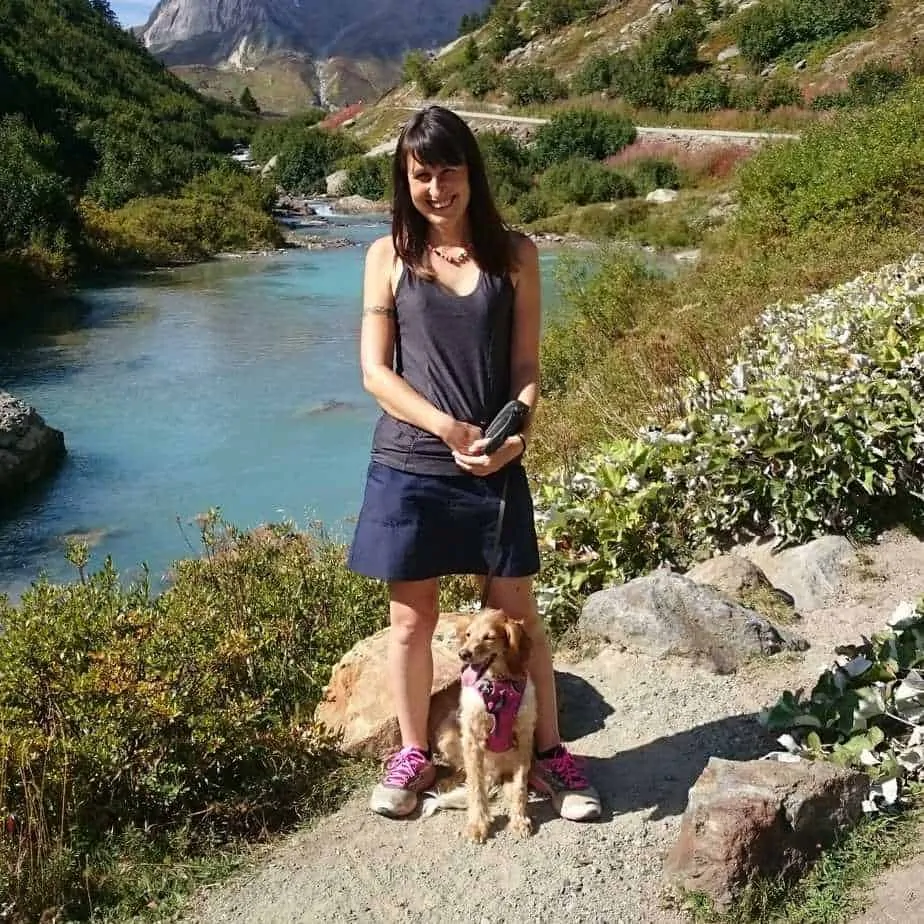
Gemma is an official dog nut and passionate traveller. Originally from the wonderful city of Edinburgh in Scotland, Gemma is now wandering across Europe with her rescue dog Annie. For ten years Gemma loved being surrounded by all things canine 24/7 whilst she ran a specialist doggy shop. The shop was a great community hub and, along with working closely with local rescues, Gemma provided customer support relating to canine behaviour and nutrition. It was a passion project and one that Gemma felt privileged to have created. She is also studying towards an Advanced Diploma in Canine Behaviour and is a huge advocate of dog rescue and promoting scientific methods of dog training.

